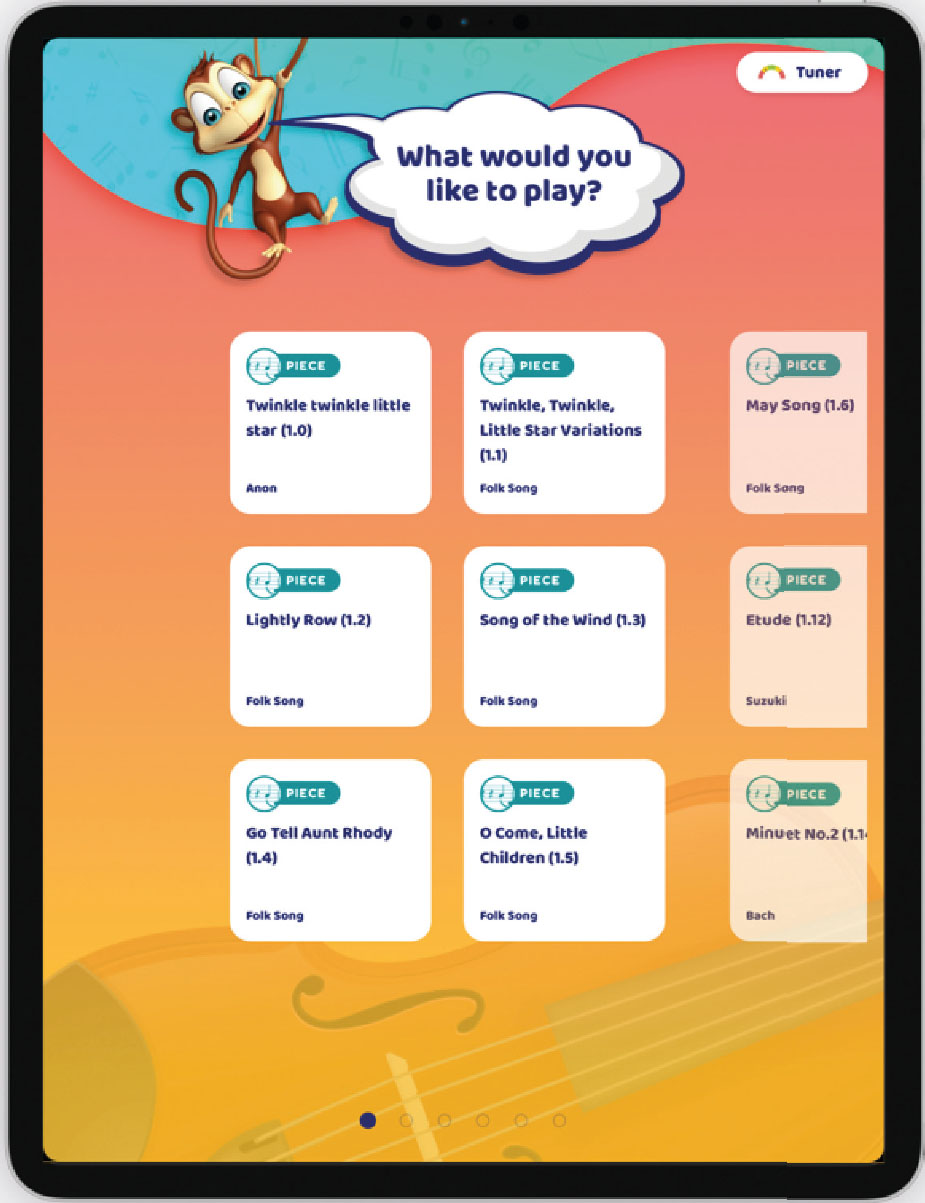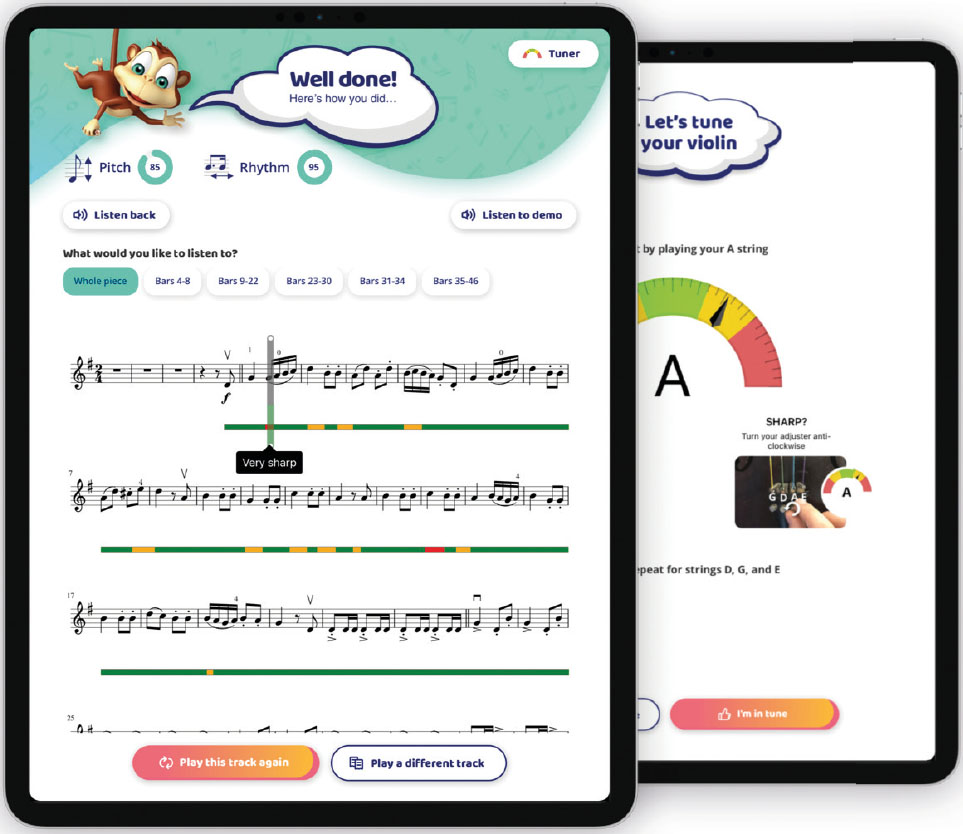
Let's Play Violin
Price: Free – with in-app purchases
iPad only, available on the App Store
Teaching is my reason for getting up in the morning. It dictates every part of my week whether teaching in my studio or not. Young people are so full of energy and enthusiasm – it gives me such a buzz to watch pennies dropping and lightbulbs flashing and I am constantly on the lookout for new ways to encourage and inspire students. Like every music teacher, I am well aware that the quality of the work that goes on in-between lessons is the key because there is only so much you can do in a weekly lesson. In an ideal world, students will return having digested what was talked about and with a list of things that have puzzled them during the week.
Learning the violin is such a technical feat that an app isn't going to work in isolation, however, it could potentially work wonders alongside regular, fun and enthusiastic teaching. I have tried plenty of apps promising great things.
When I was approached to review nSpireMe's Let's Play Violin (LPV) I was keen and excited that this might be the one. For full disclosure, it was only when coming to review it that I discovered that it is the brainchild of one of my old school friends – the music world is just very small!
Starting out
LPV is aimed at young players who have already grasped the basics. When you open the app there is a choice of levels and a cheerful monkey to greet you. The app is broken down into levels and at each level you can pick between pieces and scales for the ABRSM or Trinity syllabuses, Suzuki repertoire or ‘Fun pieces and more’.
In the top right-hand corner there is a tuner that can detect the note played on the violin, and it has a needle dial that indicates if the note is sharp or flat. As an aside, I have found this type of tuner to be advantageous as it gives the student a visual clue to what they are listening for. Some pupils initially find the sound quite abstract, yet seeing the needle moving as the note changes can really help. There are also some photos showing which way the student needs to turn the adjuster to get the string in tune – it's empowering for a pupil to be able to tune their own instrument. There are further tips if the adjusters aren't enough and the pegs need to be tackled. Once the violin is in tune, the student can listen to a demo of a piece in its entirety or in small sections. The demo is electronic but gives a good range of dynamics and articulation.
When playing by themselves, a student can choose to play alone, or with a metronome or backing track.
I love that there is an option here to adjust the speed of the track because this significantly improves the practice process, helping students see for themselves that they are making progress.
After clicking ‘Let's practise now!’, a cursor moves along the stave to show the student where they are (you can choose to turn this option off) and the cursor actually follows their playing, rather than just showing them where they should be. The app then analyses the accuracy of their rhythm and pitch during the performance, giving them a score out of 100 for each element. Under the stave, a traffic-light coloured strip indicates which areas need improving and what went wrong. They can listen back to their performance and compare it to the demo. It is even possible to isolate a few bars and flip between their own performance and that specific section of the demo, to hear where there are differences.
These features also apply to the scales – my pupils know how much I love scales. I feel that having visual feedback on these is genius and I really believe that students that can see for themselves, without someone standing over them pointing out their mistakes, may eliminate some practice battles at home. Within the scales there is a filter for level, type of minor and even notes or long tonic.

A range of syllabuses and repertoire is available in the app
Final thoughts
This app isn't trying to teach students to play the violin; it is helping them to think for themselves while taking ownership of their practice and individual progress. I feel this app could help give parents an initial structure for practising – engaging children in something fun can vastly improve the chances of a productive week's practice. Even the keenest of students need an incentive – if the impetus to practise can come from the child then that always makes it more productive, and an interactive practice chart to show what had been worked on would be a good addition here.
You can choose to pay a monthly or yearly subscription to ‘Go Premium’ where you will have access to all the pieces and scales. The content of the app is streamed from the cloud so you will need an internet connection for it to run. On the app's Twitter page, it hints that it will offer teachers a code to access all areas, which I think is a sound idea.

The app also features a tuner with hints on how to tune the instrument
This is by far the best practice app I have come across so far and I look forward to watching where it goes next – ‘Let's Play Viola’ being an obvious step!








